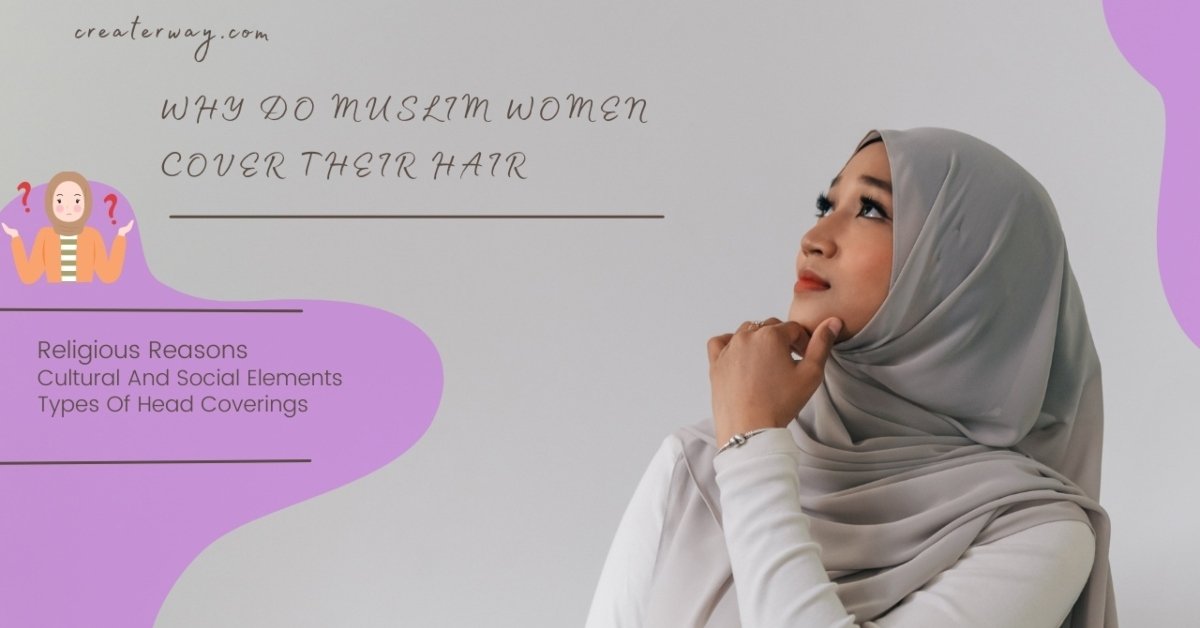Fashion
WHY DO MUSLIM WOMEN COVER THEIR HAIR

Why do muslim women cover their hair? One of the maximum seen and special aspects of the Islamic way of life is the way Muslim women get dressed. One not unusual feature of their attire is the scarf, known as the hijab. The hijab covers the hair, neck, and every so often the face of Muslim ladies. Many people are surprised why Muslim girls cowl their hair. And what the spiritual and cultural importance of the hijab is.
In this newsletter, we can explore the numerous reasons behind Muslim ladies overlaying their hair, inclusive of religious, cultural, and social factors. We can also have a look at the exceptional varieties of head coverings worn by Muslim ladies around the world.
Religious Reasons
One of the number one motives that Muslim women cover their hair is because of non-secular ideals. The Quran, the holy e-book of Islam, instructs Muslim ladies and men to dress modestly. For ladies, this consists of protecting their hair and wearing free-fitting clothes that do not reveal their determination.
The Quran states, “And inform the believing ladies to decrease their gaze and be modest. And to display of their adornment most effectively that which is plain. And to draw their veils over their bosoms” (24:31). This verse has been interpreted by using Muslim pupils to intend that girls must cowl their hair and wear loose apparel that conceals their body form.
The Quranic verse, other sayings of the Prophet Muhammad (peace be upon him) inspire women to cover their hair. Those hadiths, or sayings of the Prophet, are taken into consideration as authoritative by Muslims and are an essential source of Islamic steering.
Cultural And Social Elements
Further to religious reasons. And there also are cultural and social elements that have an impact on Muslim women to cover their hair. For lots of Muslim girls, wearing the hijab is a way to pick out themselves as Muslims and to reveal their dedication to their religion.
In a few Muslim countries, wearing the hijab is also a legal requirement. For example, in Iran, girls are required to cowl their hair and put on loose-becoming garb in public. Failure to do so can bring about fines or maybe imprisonment.
Furthermore, some Muslim girls choose to put on the hijab as a symbol of resistance and against societal strain to comply with Western beauty requirements. They sense that wearing the hijab lets them outline their very own splendor and be judged on their individuality in preference to their physical look.
“Muslim women cover their hair for a variety of reasons, including religious, cultural, and social factors. The hijab is a visible symbol of Muslim identity and is an important part of Islamic dress. While there are many different styles of head coverings worn by Muslim women, the hijab is the most common and is worn in many different ways around the world.”
Exploring the reasons behind Muslim women’s hair covering tradition.
Types Of Head Coverings
- There are many distinct styles of head coverings worn by using Muslim women around the arena. The most commonplace sort of head protection is the hijab. And which covers the hair and neck but leaves the face uncovered. The hijab may be worn in lots of one-of-a-kind patterns, relying on the lifestyle and personal preference of the wearer.
- Every other sort of head masking is the niqab, which covers the face in addition to the hair and neck. The niqab is less common than the hijab and is commonly worn in conservative Muslim societies.
- The burqa is some other form of head protection that covers the complete body. And along with the face, and has a mesh display screen over the eyes. The burqa is usually worn in Afghanistan and different conservative Muslim societies.



















